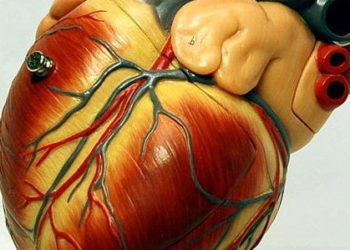The PARTNER 3 Trial: TAVR with balloon-expandable valves has favorable post-surgical outcomes among low-risk patients with severe aortic stenosis
1. This randomized control trial compared post-surgical outcomes between transcatheter aortic-valve replacement (TAVR) with balloon-expandable valves or surgical valve replacement in low- risk surgical patients, finding that patients randomized to receive TAVR had significantly lower rates of composite death, stroke or rehospitalization after one year.
2. Patients randomized to the TAVR group also had lower rates of new-onset atrial fibrillation and had shorter hospital stays.
Evidence Rating Level: 1 (Excellent)
Study Rundown: Transcatheter aortic-valve replacement (TAVR) is a minimally invasive procedure approved for the treatment of severe aortic stenosis. When it was first introduced, TAVR was initially regarded as an alternative therapy for patients who were unable to undergo open heart surgery and surgical valve replacement. However, the clinical guidelines for TAVR have since been expanded after clinical trials showed that the procedure was noninferior, if not superior, to surgical intervention among patients at intermediate or high surgical risk. This current analysis further explored the efficacy of TAVR versus surgical aortic valve replacement (SAVR) among patients with low surgical risk. In the Placement of Aortic Transcatheter Valves (PARTNER) 3 trial, researchers studied comparative post-surgical outcomes including composite rates of death, stroke and rehospitalization between patients randomized to undergo TAVR with balloon-expandable valves versus those randomized to receive open heart surgery with SAVR. Overall, researchers found that the TAVR group had significantly lower composite rates of death, stroke or rehospitalization after one year. The TAVR group also had lower rates of new-onset atrial fibrillation, and shorter hospitalization stays. It was also noted that those who underwent TAVR had more rapid improvement in their NYHA class score, 6-minute walk tests and Kansas City Cardiomyopathy Questionnaire (KCCQ) score post procedure. While these results were only studied for a period of one year and longer-term follow up is needed, this study could expand clinical guidelines for TAVR use even further in the management of severe aortic stenosis.
Click to read the study in NEJM
In-Depth [randomized control trial]: This multicenter randomized control trial enrolled 1,000 patients from 71 countries between 2016-2017. Patients were assigned in a 1:1 ratio to receive either TAVR with the SAPIEN 3 system or undergo a SAVR with a bioprosthetic valve. The assigned procedures were performed in 950 patients (496 in the TAVR group and 454 in the surgery group). The primary endpoint of this study was the composite rate of death from any cause, stroke, or rehospitalization after 1 year of the randomized procedure. Secondary endpoints included rates of stroke, composite rate of death or stroke, rate of new-onset atrial fibrillation, length of hospitalization and rate of poor treatment outcomes as determined by the KCCQ survey. After 1 year, the composite outcome of death, stroke or rehospitalization occurred in 42 patients in the TAVR group (8.5%) and 68 patients in the surgery group (15.1%). The absolute difference between groups was -6.6 percentage points (95% CI -10.8 to -2.5; p<0.001 for noninferiority; HR 0.54 (95% CI 0.37-0.69, P=0.001 for superiority). The TAVR group also had lower rates of stroke (0.6% vs 2.4%; HR 0.25, 95% CI 0.07 to 0.88; P=0.02), lower rates of death or stroke (1.0% vs 3.3%; HR 0.30; 95% CI 0.11 to 0.83; P=0.01), and lower rates of new onset atrial fibrillation (5.0% vs 39.5%; HR 0.10; 95% CI 0.06 to 0.16; P<0.001) as well as shorter hospital stays (3 days vs 7 days; P<0.001).
Image: PD
©2019 2 Minute Medicine, Inc. All rights reserved. No works may be reproduced without expressed written consent from 2 Minute Medicine, Inc. Inquire about licensing here. No article should be construed as medical advice and is not intended as such by the authors or by 2 Minute Medicine, Inc







